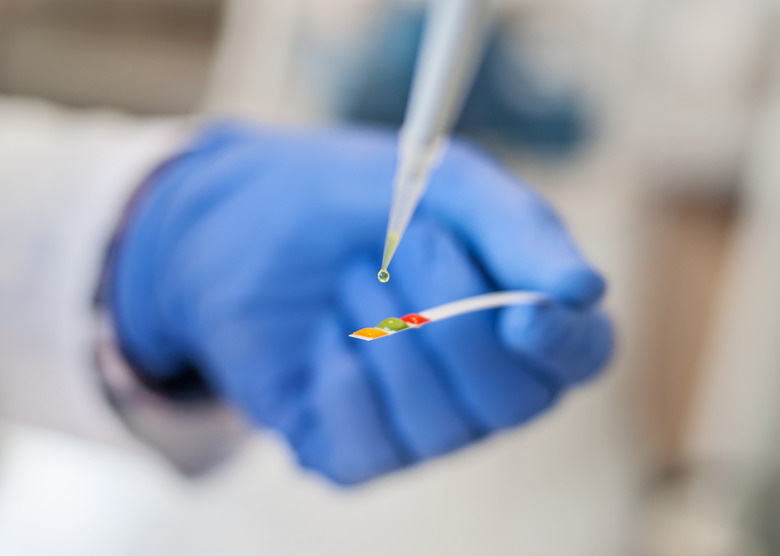PH Levels Of Catalase
Catalase is an enzyme, a protein that catalyzes or accelerates chemical reactions. In the human body, catalase breaks down hydrogen peroxide in the liver, which is important for certain reactions in cells but can also damage DNA. Catalase prevents damage by accelerating the breakdown of hydrogen peroxide into oxygen and water. If you pour hydrogen peroxide on a cut, you may notice bubbling. The bubbles are oxygen gas caused by a reaction with catalase.
TL;DR (Too Long; Didn't Read)
Catalase is an enzyme, a large protein that speeds up the rate of a chemical reaction. The optimum pH level of catalase is between pH 7 and pH 11. At a pH level lower or higher than this range, the catalase stops working.
Enzyme Activity
Enzyme Activity
To work well (or at all) an enzyme needs a certain environment or condition. As temperature increases, the rate of enzyme activity also increases. As temperature increases toward its optimum point of 37 degrees Celsius (98.6 F), hydrogen bonds relax and make it easier for the hydrogen peroxide molecules to bind to the catalase. The part of the enzyme where this reaction takes place is called the active site. A temperature that is higher or lower than this optimum point changes the shape of the active site and stops the enzyme from working. This process is called denaturation.
Catalase pH Levels
Catalase pH Levels
Enzyme pH levels also change the shape of the active site and affect the rate of enzyme activity. Each enzyme has its own optimal range of pH in which it works most effectively. In humans, catalase works only between pH 7 and pH 11. If the pH level is lower than 7 or higher than 11, the enzyme becomes denaturated and loses its structure. The liver sustains a neutral pH of about 7, which creates the best environment for catalase and other enzymes.
Measuring Catalase Activity
Measuring Catalase Activity
You measure catalase activity by adding catalase solution to hydrogen peroxide solution and leaving it for a length of time – one minute, for example. The reaction produces bubbles of oxygen gas, which look like foam. Use a ruler to measure the height the foam reaches in the test tube. The higher the foam in the test tube, the greater the catalase activity. Vary the pH level and temperature of the solution to investigate the effects of pH and temperature on enzyme activity. Hydrogen peroxide is exceptionally corrosive, so handle with care and wear safety goggles throughout the experiment.
Cite This Article
MLA
Gillespie, Claire. "PH Levels Of Catalase" sciencing.com, https://www.sciencing.com/ph-levels-catalase-6826245/. 21 May 2018.
APA
Gillespie, Claire. (2018, May 21). PH Levels Of Catalase. sciencing.com. Retrieved from https://www.sciencing.com/ph-levels-catalase-6826245/
Chicago
Gillespie, Claire. PH Levels Of Catalase last modified August 30, 2022. https://www.sciencing.com/ph-levels-catalase-6826245/
